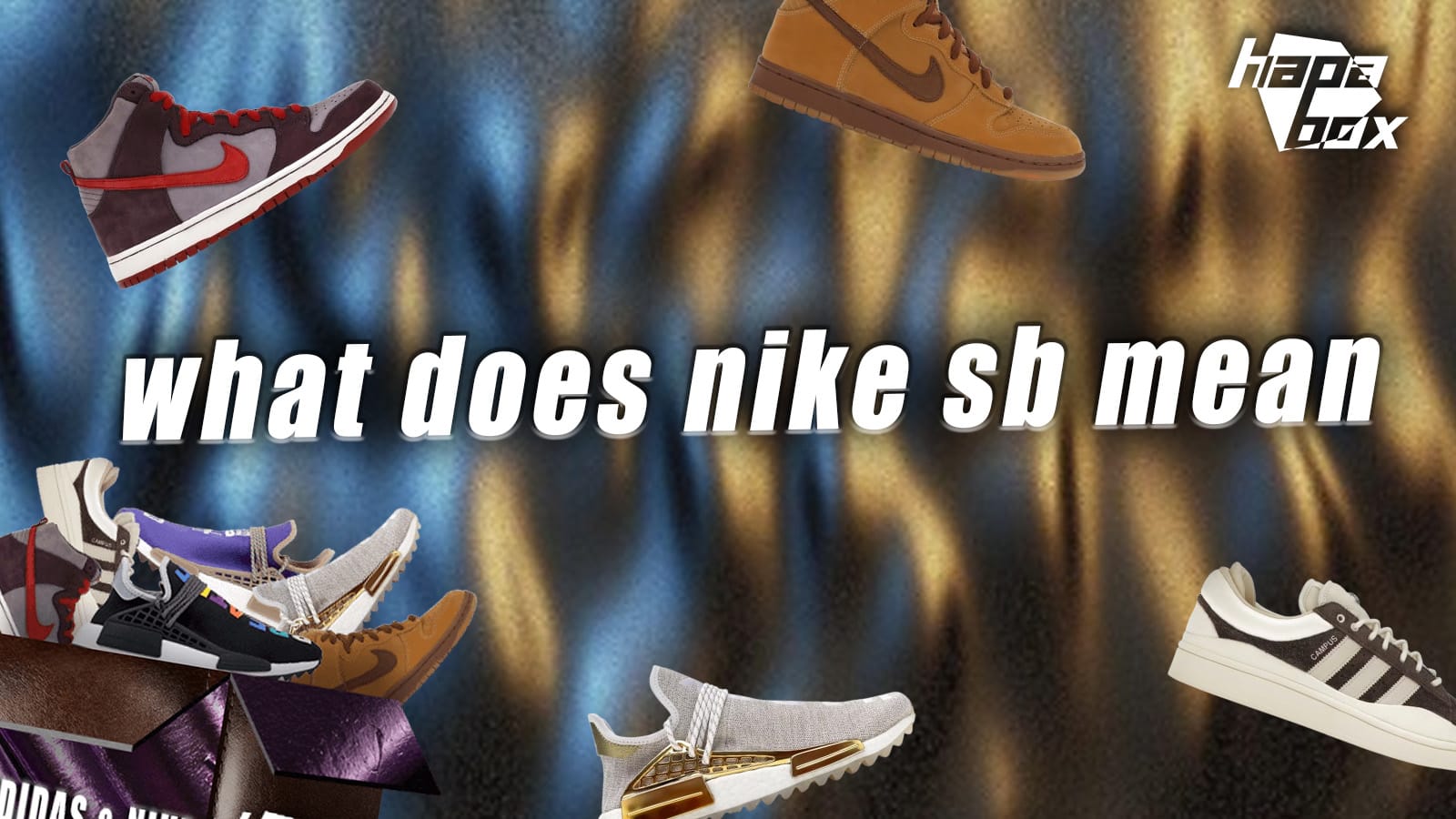What Does Nike SB Mean? A Deep Dive into the Skateboarding Subculture and Brand Evolution

The Nike SB logo is now a hallmark of both performance and hype in the sneaker world. You’ve probably seen it stamped on some of the most coveted sneakers in history—from limited-edition Dunks to pro-level skate shoes worn by legends. But what does Nike SB actually stand for? Simply put, SB stands for “Skateboarding”. Yet those two letters represent far more than just a sport. They mark a cultural pivot, a strategic realignment, and perhaps most importantly, Nike’s earned place in a community that once rejected it.
From Outsider to Insider: Nike’s Strategic Reinvention in Skateboarding
Nike’s relationship with skateboarding didn’t begin smoothly. In the 1990s, skaters viewed big brands with skepticism—preferring homegrown labels like Vans or DC that felt more connected to their rebellious roots. Nike’s early forays into skate were largely ignored, seen as tone-deaf and opportunistic.
Everything changed in 2002, when Nike didn’t just launch a new shoe—it launched a new strategy: Nike SB. Rather than forcing their way in, Nike chose to listen first, rebuild from the inside, and earn credibility over time.
This transformation involved a few critical decisions:
- Collaborating with Core Skaters: Nike enlisted real skaters—Paul Rodriguez, Eric Koston, and visionary insider Sandy Bodecker—to shape the direction of SB. Bodecker, often called the “father of Nike SB,” knew that in skateboarding, authenticity isn’t a marketing slogan—it’s everything.
- Purpose-Built Products: Instead of repackaging basketball silhouettes, Nike SB engineered shoes for skateboarding. Zoom Air cushioning for impact protection, padded tongues for support, suede uppers for durability—every detail was skater-informed. The Nike SB Dunk, inspired by the classic Nike Dunk, became the flagship model, but it was reimagined from the outsole up for real board performance.
- Grassroots Integration: Nike didn’t chase big-box exposure; they focused on local skate shops, skate parks, and independent teams. This wasn’t just branding—it was community-building.
As someone who’s closely followed sneaker and streetwear culture, I view Nike SB’s pivot not just as a product launch but as a textbook case of subcultural integration done right. Nike didn’t try to dominate with money—they embedded themselves by respecting the culture’s codes, rituals, and gatekeepers. That’s rare, and it worked.
Nike SB’s Rise: From Skater Staple to Streetwear Icon
In just a few years, Nike SB transitioned from an underdog line to a streetwear heavyweight. How? Scarcity, storytelling, and synergy.
Limited-edition collaborations with skate shops, artists, musicians, and even global brands turned SB Dunks into wearable art. These weren’t just shoes—they were cultural artifacts. Each drop told a story. Each colorway was rooted in meaning. And with tightly controlled inventory, demand always outweighed supply, fueling resale markets and creating feverish anticipation for every release.
This approach didn’t just sell shoes—it created status and identity. Owning a pair of rare SBs became a badge of cultural fluency.
In my view, Nike SB helped pioneer the blueprint for modern hype culture: limited product + subcultural credibility + global accessibility = explosive demand. And it wasn’t accidental—it was the result of deep, thoughtful engagement with the skate world.
What Sets Nike SB Shoes Apart?
Yes, the designs are eye-catching—but Nike SB shoes also perform. Every feature serves a functional purpose for skaters:
- Zoom Air Units: Often embedded in the insole or heel for superior impact absorption when landing tricks.
- Padded Tongue and Collar: Increases comfort and helps lock in fit during intense sessions.
- Durable Materials: Think suede, leather, and reinforced stitching that hold up against grip tape wear.
- Grippy Outsoles: Crafted for board feel and traction, allowing better control.
- Cupsole vs. Vulcanized Options: Cupsoles provide cushion and stability; vulcs give flexibility and feel—skaters choose based on their style.
These are not just sneakers—they’re tools, built in collaboration with those who use them daily.
Nike SB Today: Beyond the Skatepark
Though still deeply respected in core skate circles, Nike SB has long outgrown its niche. It now occupies a rare space—where performance meets prestige, and where authenticity meets fashion.
You’ll find SBs on pro skaters and fashion week runways alike. This crossover appeal has allowed Nike SB to remain culturally relevant without abandoning its roots.
And that’s what truly defines Nike SB: not just the meaning of the name—but the meaningful connection it built. It’s a symbol of what happens when a brand respects the subculture it hopes to serve—and how that respect can translate into both loyalty and influence far beyond its original scope.
Final Thoughts: Nike SB’s Legacy
So yes, Nike SB stands for Skateboarding—but that’s just the surface. What it truly represents is Nike’s deep dive into a subculture, its willingness to evolve, and its mastery of storytelling and scarcity in shaping modern sneaker culture.
Nike SB didn’t just make skate shoes. It redefined how a global brand can earn legitimacy, creating a legacy that still shapes streetwear, skateboarding, and collector communities around the world.
